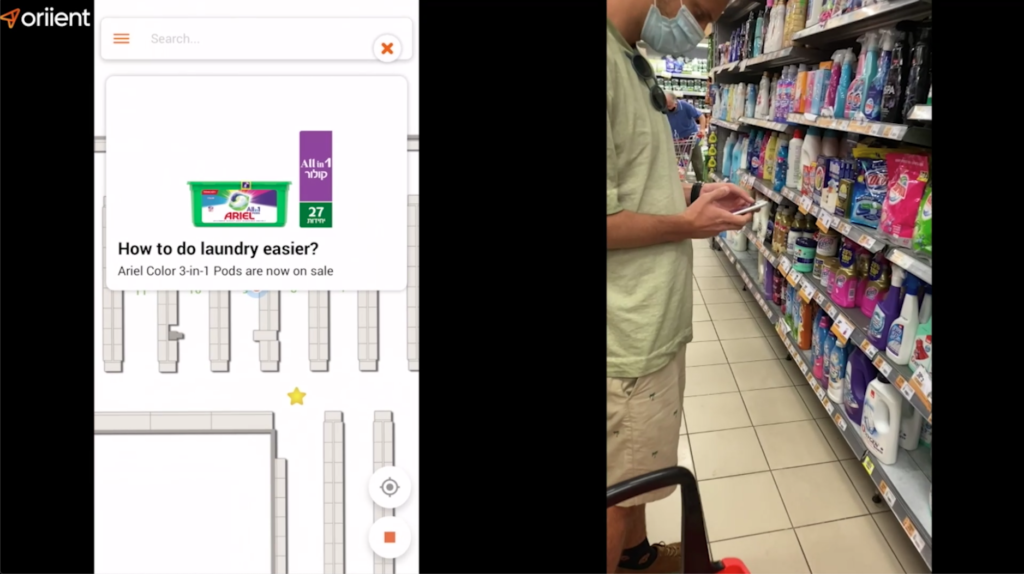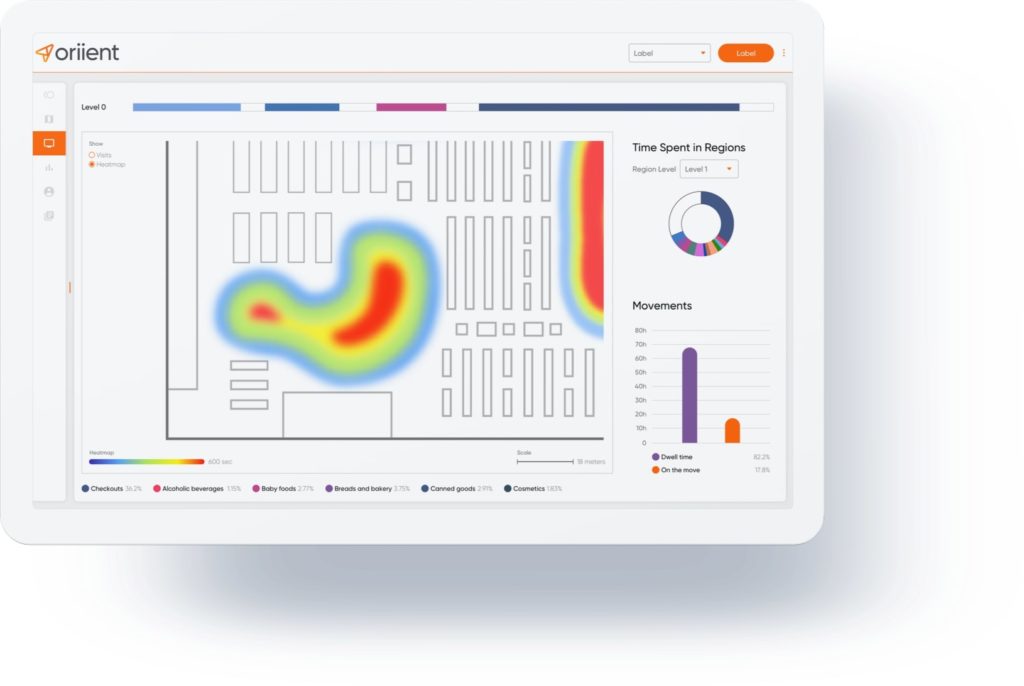Drive Higher Conversions and Shopper Engagement with In-Store Proximity Marketing
Ever received a coupon for an item you need but knew you’ll forget to use? Maybe you received it in the store but the product is too far away or can’t be found?
It’s a frustration of many shoppers. A recent Kantar TNS consumer survey found that 50% of global shoppers have a high interest in real-time personalized offers provided during in-store shopping. Of these same shoppers, 49% would like to use in-store navigation on their mobile device to navigate to the desired product.
It shouldn’t be surprising then that as part of retailers’ precision-marketing efforts, the leading type of in-store technology today revolves around leveraging the shopper location.
“The #1 in-store technology is location-based marketing,
which is currently a major focus and a transformational store strategy for many retailers”
– Coresight Research NRF 2020 Insights
Traditional marketing methods for targeting shoppers according to location include location-based marketing and proximity marketing, which tends to focus on a smaller targeted geographic range. Both fail to serve the purpose of precision marketing, since precision marketing requires a granularity achieved only using in-store proximity marketing.
To deliver the precision and context retailers need and shoppers demand, further precision is needed. Standard proximity marketing stops at the door and is limited by GPS’s lack of accuracy indoors.
In-store proximity marketing, in contrast, targets shoppers per aisle, shelf or category with the most relevant good or service. In-store navigation combined with relevant upsell offers is a huge opportunity for retailers and CPG brands to increase app engagement. Mobile apps have long been used to increase convenience for shoppers, but using them to understand the shopper location at this level of granularity is taking it a step further.
One of the most effective proximity marketing strategies targets shoppers via the use of indoor GPS on their mobile devices. Here are three of its main benefits:
1. Higher Engagement and Conversions
As part of precision-marketing efforts, CPG brands and retailers target shoppers with hyper-personalized offerings.
Offering a promotion while the product is within reach, at the exact moment of purchase, leads to higher engagement and conversions.
Research shows that not only is influencing shoppers at this exact moment of purchase critical, but that they also demand it:
“More than half (54%) of global consumers shop with retailers that
deliver offers in-store via smartphone
because they want offers the moment they are shopping”
– Retail TouchPoints
A shopper lingering in front of a shelf for more than five seconds suggests that the consumer is deciding whether or not to purchase an item. This is the perfect time and place to target them with a relevant coupon leading to purchase of the private label or highest margin product in that specific category.
Suggestions of complementary items to those already in a consumer’s shopping cart are also more successful when prompted at the right moment. After a shopper picked up pasta for example, offers on a pasta sauce are highly relevant upsells, but much more likely to be used if shown as they pass by the shelf selling them. This is also known as contextual marketing, or tailoring messages and information to customers at the point of need.
Even with contextualized offers, it must be convenient to drive higher conversions. In-store proximity marketing makes these types of offers highly accessible, eliminating the need for the shopper to proactively spend time filtering through a general assortment of digital coupons.
2. The Ultimate In-Store Shopper Experience
When shoppers receive highly targeted offers at the moment of purchase, they’ll have a better shopper experience, leading to more engagement and increased loyalty to that brand.
The more contextual the offerings for the shopper, the more convenient it is. Mobile apps that increase convenience in-store lead to higher app retention and repeat customers.
It stands to reason that proximity marketing strategies combined with an indoor positioning system is the perfect solution to bridge the gap between the digital and in-store purchasing experience.
3. A Better Understanding of the Path to Purchase
Proximity marketing through an accurate IPS (indoor positioning system) allows CPG brands and retailers to better understand shoppers’ in-store behavior and the path to purchase.
When and where are they lingering? Where are they quickly passing by? And which aisles or shelves are they not visiting at all? These are all actionable insights that can be used to drive traffic into additional categories of products (with tactics around changing the plano guides or planogram, signage, different promotions, etc.).
Gaining a deeper understanding of in-store traffic behavior delivers more value than location-based or proximity marketing alone. In addition, cross-referencing in-store location data with other data-sets, such as from Point-of-Sale (POS), allows more accurate measurement of the success of promotions.
Bridging the Digital Gap with Indoor GPS
Retailers today want a shopper experience that targets shoppers beyond just the store level, to the shelf and aisle level as well. But most proximity marketing is unable to provide it without indoor GPS technology.
The Kantar TNS survey demonstrated that while only 28% of shoppers want personalized offers provided near the store, almost 50% prefer personalized offers provided during in-store shopping:
Although indoor positioning technologies currently exist, they entail a heavy up-front investment, high maintenance costs, and cumbersome installation. Oriient’s advanced geomagnetic indoor positioning solution is both hardware-free and cost-effective. At the same time, it’s reliable, accurate, and easily scalable – making it perfect for retailers.
This combination of in-store proximity marketing and mobile technology is the winning combination that provides the hyper-personalized in-store experience that modern shoppers demand.
Want to learn more about how retailers and CPG brands deliver shoppers the ultimate shopper experience? Check out all the benefits of an in-store digital experience.



